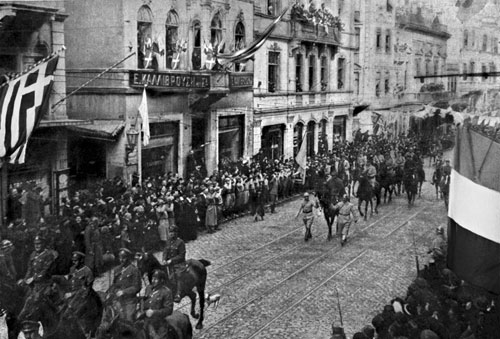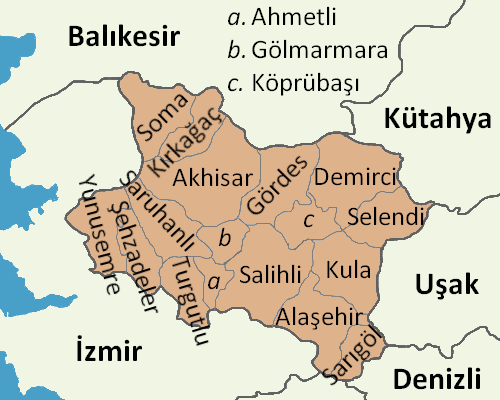|
Paşayiğit
Paşayiğit is a neighbourhood of the town Keşan, Keşan District, Edirne Province, Turkey. Its population is 1,308 (2022). It is situated on Turkish state highway D.550 which connects Keşan to Edirne. Its distance to Keşan is and to Edirne is . The name of the town refers to a certain Paşayiğit, a Turkmen leader from Saruhan (present Manisa, Turkey) who captured the town on behalf of the Ottoman Empire in the 14th century. Although Paşayiğit preserved its Greek character up to 20th century, after the Turkish War of Independence, according to population exchange agreement, Greek population was replaced by Turkish population from Drama, Greece. Between 1999 and the 2013 reorganisation, it was a town (''belde Belde (literally "town", also known as ''kasaba'') means "large village with a municipality" in Turkish language, Turkish. All Turkish province centers and district centers have municipalities, but the Villages of Turkey, villages are usually too ...''). Refere ... [...More Info...] [...Related Items...] OR: [Wikipedia] [Google] [Baidu] |
Keşan
Keşan (; ; ; Byzantine Greek: Ρούσιον, ''Rusion'') is a town in Edirne Province, Turkey. It is the seat of Keşan District.İlçe Belediyesi , Turkey Civil Administration Departments Inventory. Retrieved 1 March 2023. Its population is 64,842 (2022). In the summer its population increases because of an influx of tourists. The mayor is Mehmet Özcan ( CHP). and |
Ottoman Empire
The Ottoman Empire (), also called the Turkish Empire, was an empire, imperial realm that controlled much of Southeast Europe, West Asia, and North Africa from the 14th to early 20th centuries; it also controlled parts of southeastern Central Europe, between the early 16th and early 18th centuries. The empire emerged from a Anatolian beyliks, ''beylik'', or principality, founded in northwestern Anatolia in by the Turkoman (ethnonym), Turkoman tribal leader Osman I. His successors Ottoman wars in Europe, conquered much of Anatolia and expanded into the Balkans by the mid-14th century, transforming their petty kingdom into a transcontinental empire. The Ottomans ended the Byzantine Empire with the Fall of Constantinople, conquest of Constantinople in 1453 by Mehmed II. With its capital at History of Istanbul#Ottoman Empire, Constantinople (modern-day Istanbul) and control over a significant portion of the Mediterranean Basin, the Ottoman Empire was at the centre of interacti ... [...More Info...] [...Related Items...] OR: [Wikipedia] [Google] [Baidu] |
Official Gazette Of The Republic Of Turkey
''Official Gazette of the Republic of Türkiye'' () is the national and only official journal of Turkey that publishes the new legislation and other official announcements. It is referred to as ''Resmî Gazete'' in short. It has been published since 7 February 1921, approximately two years before the proclamation of the republic. The first fifteen issues of the newspaper were published once a week, the next three issues once every two weeks, the next three issues once a week. From 18 July 1921 to 10 September 1923, the newspaper was not published due to the Turkish War of Independence. Since Issue No. 763, which was released on 17 December 1927, it has been officially published under the name ''Türkiye Cumhuriyeti Resmî Gazete''. As of 1 December 1928, it started to be printed with the new Turkish alphabet The Turkish alphabet () is a Latin-script alphabet used for writing the Turkish language, consisting of 29 letters, seven of which ( Ç, Ğ, I, İ, Ö, Ş and Ü) h ... [...More Info...] [...Related Items...] OR: [Wikipedia] [Google] [Baidu] |
Belde
Belde (literally "town", also known as ''kasaba'') means "large village with a municipality" in Turkish language, Turkish. All Turkish province centers and district centers have municipalities, but the Villages of Turkey, villages are usually too small to have municipalities. The population in some villages may exceed 2000 and in such villages a small municipality may be established depending on residents' choice. Such villages are called ''belde''. Up to 2014 the number of ''belde'' municipalities was about 1400. On 30 March 2014 by the act no. 6360 all villages (those with and without municipality) were included in the urban fabric of the district municipalities in 30 provinces. Thus ''belde'' municipalities in 30 provinces were abolished. The number of abolished ''belde'' municipalities is 1040. Presently, in 51 provinces, which are not in the scope of the act no 6360, there are still 394 ''belde'' municipalities. See also *2013 Turkish local government reorganisation *Metropo ... [...More Info...] [...Related Items...] OR: [Wikipedia] [Google] [Baidu] |
2013 Turkish Local Government Reorganisation
Municipalities () are the basic units of local government in Turkey. According to the Turkish Statistical Institute the population of Turkey Turkey, officially the Republic of Türkiye, is a country mainly located in Anatolia in West Asia, with a relatively small part called East Thrace in Southeast Europe. It borders the Black Sea to the north; Georgia (country), Georgia, Armen ... was 76,667,864 as of 31 December 2013. The majority of the population live in settlements with municipalities. The number of municipalities in Turkey was 2,947 in 2009. But in 2013, most of the small town () municipalities were merged to district () municipalities by the Act 6360Law No. 6360 '' Offi ... [...More Info...] [...Related Items...] OR: [Wikipedia] [Google] [Baidu] |
Drama, Greece
Drama ( ) is a city and Communities and Municipalities of Greece, municipality in Macedonia (Greece), Macedonia, northeastern Greece. Drama is the capital of the regional units of Greece, regional unit of Drama (regional unit), Drama which is part of the East Macedonia and Thrace modern regions of Greece, region. The city (pop. 44,257 in the 2021 Greek census, 2021 census) is the economic center of the municipality (pop. 55,679), which in turn comprises 60 percent of the regional unit's population. The next largest communities in the municipality are Χiropótamos (2,535), Choristi (pop. 2,512), Kallífytos (1,627), Kalós Agrós (838), and Koudoúnia (814). Built at the foot of mount Falakro, in a verdant area with abundant water sources, Drama has been an integral part of the Hellenic world since the Classical antiquity, classical era; under the Byzantine Empire, Drama was a fortified city with a castle and rose to great prosperity under the Komnenoi as a commercial and milita ... [...More Info...] [...Related Items...] OR: [Wikipedia] [Google] [Baidu] |
Greek People
Greeks or Hellenes (; , ) are an ethnic group and nation native to Greece, Cyprus, southern Albania, Anatolia, parts of Italy and Egypt, and to a lesser extent, other countries surrounding the Eastern Mediterranean and Black Sea. They also form a significant diaspora (), with many Greek communities established around the world.. Greek colonies and communities have been historically established on the shores of the Mediterranean Sea and Black Sea, but the Greek people themselves have always been centered on the Aegean and Ionian seas, where the Greek language has been spoken since the Bronze Age.. Until the early 20th century, Greeks were distributed between the Greek peninsula, the western coast of Asia Minor, the Black Sea coast, Cappadocia in central Anatolia, Egypt, the Balkans, Cyprus, and Constantinople. Many of these regions coincided to a large extent with the borders of the Byzantine Empire of the late 11th century and the Eastern Mediterranean areas of ancient Gr ... [...More Info...] [...Related Items...] OR: [Wikipedia] [Google] [Baidu] |
Population Exchange Between Greece And Turkey
The 1923 population exchange between Greece and Turkey stemmed from the "Convention Concerning the Exchange of Greek and Turkish Populations" signed at Lausanne, Switzerland, on 30 January 1923, by the governments of Greece and Turkey. It involved at least 1.6 million people (1,221,489 Greek Orthodox from Asia Minor, Eastern Thrace, the Pontic Alps and the Caucasus, and 355,000–400,000 Muslims from Greece), most of whom were forcibly made refugees and ''de jure'' denaturalized from their homelands. On 16 March 1922, Turkish Minister of Foreign Affairs Yusuf Kemal Tengrişenk stated that " e Ankara Government was strongly in favour of a solution that would satisfy world opinion and ensure tranquillity in its own country", and that " was ready to accept the idea of an exchange of populations between the Greeks in Asia Minor and the Muslims in Greece". Eventually, the initial request for an exchange of population came from Eleftherios Venizelos in a letter he submitted to th ... [...More Info...] [...Related Items...] OR: [Wikipedia] [Google] [Baidu] |
Turkish War Of Independence
, strength1 = May 1919: 35,000November 1920: 86,000Turkish General Staff, ''Türk İstiklal Harbinde Batı Cephesi'', Edition II, Part 2, Ankara 1999, p. 225August 1922: 271,000Celâl Erikan, Rıdvan Akın: ''Kurtuluş Savaşı tarihi'', Türkiye İş̧ Bankası Kültür Yayınları, 2008, p. 339. , strength2 = 60,000 30,000 20,000 7,000 , casualties1 = 13,000 killedKate Fleet, Suraiya Faroqhi, Reşat Kasaba: The Cambridge History of Turkey Volume 4'', Cambridge University Press, 2008, , p. 159.22,690 died of diseaseSabahattin Selek: ''Millî Mücadele – Cilt I (engl.: National Struggle – Edition I)'', Burçak yayınevi, 1963, p. 109. 5,362 died of wounds or other non-combat causes35,000 wounded7,000 prisonersAhmet Özdemir''Savaş esirlerinin Milli mücadeledeki yeri'', Ankara University, Türk İnkılap Tarihi Enstitüsü Atatürk Yolu Dergisi, Edition 2, Number 6, 1990, pp. 328–332Total: 83,052 casualties , casualties2 = 24,240 kill ... [...More Info...] [...Related Items...] OR: [Wikipedia] [Google] [Baidu] |
Manisa
Manisa () is a city in Turkey's Aegean Region and the administrative seat of Manisa Province, lying approximately 40 km northeast of the major city of İzmir. The city forms the urban part of the districts Şehzadeler and Yunusemre, with a population of 385,452 in 2022. Modern Manisa is a booming center of industry and services, advantaged by its closeness to the international port city and the regional metropolitan center of İzmir and by its fertile hinterland rich in quantity and variety of agricultural production. In fact, İzmir's proximity also adds a particular dimension to all aspects of life's pace in Manisa in the form of a dense traffic of daily commuters between the two cities, separated as they are by a half-hour drive served by a fine six-lane highway nevertheless requiring attention at all times due to its curves and the rapid ascent (sea-level to more than 500 meters at Sabuncubeli Pass) across Mount Sipylus's mythic scenery. The historic part of Manisa s ... [...More Info...] [...Related Items...] OR: [Wikipedia] [Google] [Baidu] |
Keşan District
Keşan District is a district of the Edirne Province of Turkey. Its seat is the town of Keşan.İlçe Belediyesi , Turkey Civil Administration Departments Inventory. Retrieved 1 March 2023. Its area is 1,098 km2, and its population is 83,874 (2022). Keşan district is bordered by and Uzunköprü to the north, to the east, Şarköy to the southeast, |
Manisa Province
Manisa Province () is a Provinces of Turkey, province and Metropolitan municipalities in Turkey, metropolitan municipality in western Turkey. Its area is 13,339 km2, and its population is 1,468,279 (2022). Its neighboring provinces are İzmir Province, İzmir to the west, Aydın Province, Aydın to the south, Denizli Province, Denizli to the southeast, Uşak Province, Uşak to the east, Kütahya Province, Kütahya to the northeast, and Balıkesir Province, Balıkesir to the north. The city of Manisa is the seat and capital of the province. The traffic code is 45. Districts Sites of interest Mount Sipylus List of national parks of Turkey, National Park (''Spil Dağı Milli Parkı'') near the city of Manisa embraces a richly forested area, hot springs, the famous "crying rock" of Niobe, and a Hittites, Hittite carving of the mother-goddess Cybele. The park boasts about 120 varieties of native plants within its boundaries, especially wild tulips. The park provides opportuni ... [...More Info...] [...Related Items...] OR: [Wikipedia] [Google] [Baidu] |




